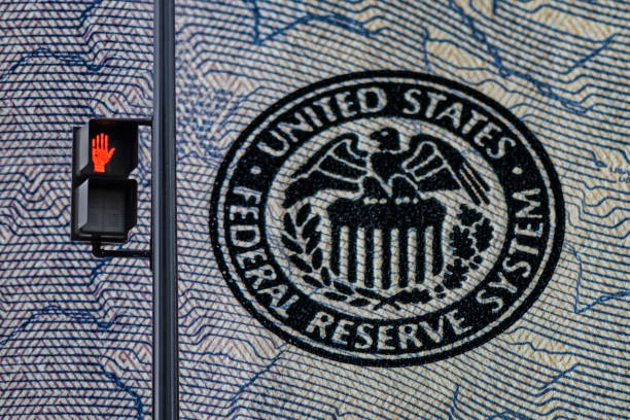分析
Central bank policy divergence: The near-term catalyst for a stronger USD

There is a lot going right for the USD at present and the tailwinds for USD appreciation are growing.
US data is not only beating consensus expectations on a consistent basis, but the key economic data points are either improving or already strong.
The US labour market is in rude health (US nonfarm payrolls have averaged 280k in 2024), household consumption is healthy, manufacturing is expanding after 16 months in contraction and sticky inflation offers the Fed absolutely no reason to cut rates in the near term. In fact, with energy prices rising, unfavourable base effects about to kick in, and an election in November, the prospect of the Federal Reserve cutting interest rates is fast becoming a 2025 story.
Expectations of synchronized central monetary policy easing starting from June have been a key factor keeping FX volatility suppressed, but it has also been a reason why the USD wasn’t gaining to the extent that many had felt was possible. That dynamic seems to be sifting in the USDs favour and this is seen front and centre in interest rate pricing.
In January the central path priced into US interest rate futures was for seven 25bp cuts through 2024 – that pricing now stands at under two 25bp rate cuts (or 43bp of implied rate cuts).
What’s important is that expectations are evolving that future Fed policy may diverge from that of the ECB, BoC, SNB and Riksbank, and to a lesser extent BoE, RBA and RBNZ. That is, the Fed may be on hold for an extended period, while others embark on a cutting cycle from June – and it’s this growing divergence in policy expectations that could see the USD bull trend.
Japanese intervention risk?
Amid the universal USD rally post US-CPI print, USDJPY gets close focus with the break of ¥152, taking the pair to the best levels since 1990.
The technical break marries well with the move in US bond yields, where higher US bond yields incentivize funds to buy USDs. With USD fundamentals improving, it is progressively becoming a losing battle for the Japanese authorities to intervene to strengthen the JPY.
On current dynamics, tactically, it suggests to me that any spike lower in USDJPY from intervention-related headlines would likely see FX players initiate new long positions – whether traders are in front of the screens though at the time to capture the opportunity is a key consideration.
FX traders still have 21 October and 22 September in mind, when the Japanese Ministry of Finance last implemented intervention to purchase JPY, causing a 550pip rip to the downside in both cases. Naturally, if one holds a long USDJPY exposure, then that sort of move can truly hurt the account balance, especially when price is moving so rapidly that it can result in sizeable slippage.
Consider the MoF offer clues to the market and codewords that let us know how close they are to intervention. The language we’re currently hearing puts us on notice that they are serious about curbing excessive one-way trends in the JPY. For example, on the break of ¥152, we heard from Japanese currency chief Masato Kanda, who has again said the moves in the JPY are rapid and they will take appropriate action if needed.
The step up in rhetoric from here is when we see headlines that the BoJ are “checking rates”. This dials up the intervention risk to a great extent and suggests that JPY purchase intervention is now probable. This is where liquidity can thin out and headlines can result in 80-100p spikes lower. I suspect we see headlines of such should we see a break of ¥153, but it's less about levels (of USDJPY) and more about the rate of change.
This does pose a tactical issue for traders because, on one hand, it's attractive to be long USDJPY given the relative rate differentials, the potential for the Fed to be on hold until 2025, as well as strong US economic fundamentals. Yet, few want to be on the wrong side of a 500-pip drop.
The risk manager in me suggests there could be near-term USD upside, but it could be safer to express this through long USDCHF or short EURUSD trades – although I also feel JPY purchase intervention is fighting an uphill battle and will offer diminishing returns.
Related articles
此處提供的材料並未按照旨在促進投資研究獨立性的法律要求準備,因此被視為市場溝通之用途。雖然在傳播投資研究之前不受任何禁止交易的限製,但我們不會在將其提供給我們的客戶之前尋求利用任何優勢。
Pepperstone 並不表示此處提供的材料是準確、最新或完整的,因此不應依賴於此。該信息,無論是否來自第三方,都不應被視為推薦;或買賣要約;或征求購買或出售任何證券、金融產品或工具的要約;或參與任何特定的交易策略。它沒有考慮讀者的財務狀況或投資目標。我們建議此內容的任何讀者尋求自己的建議。未經 Pepperstone 批準,不得復製或重新分發此信息。


